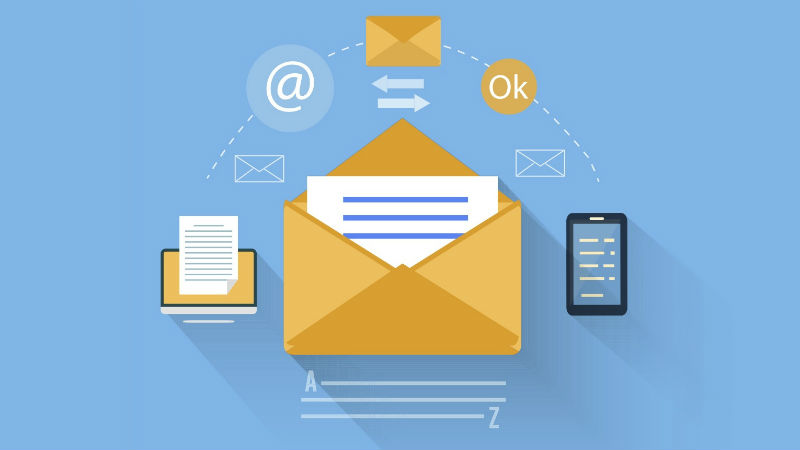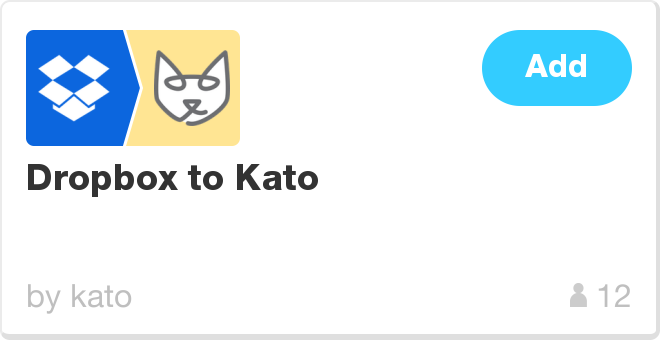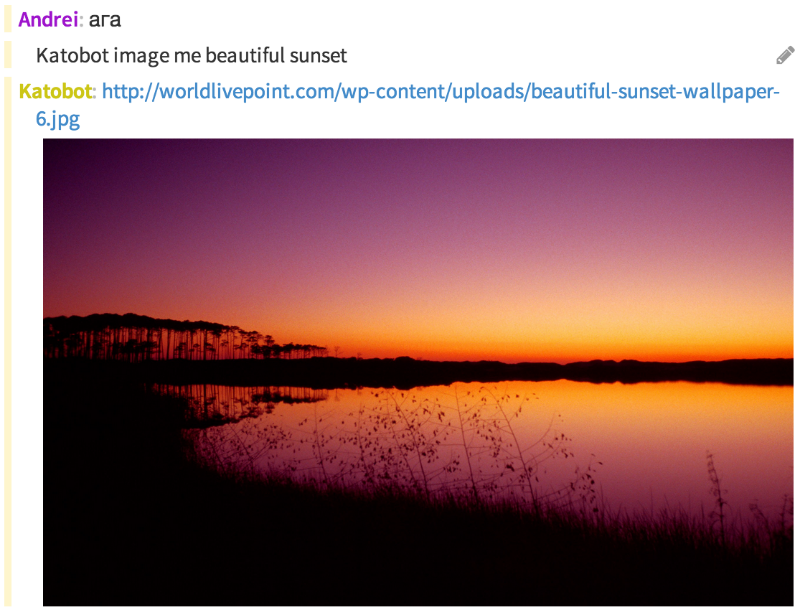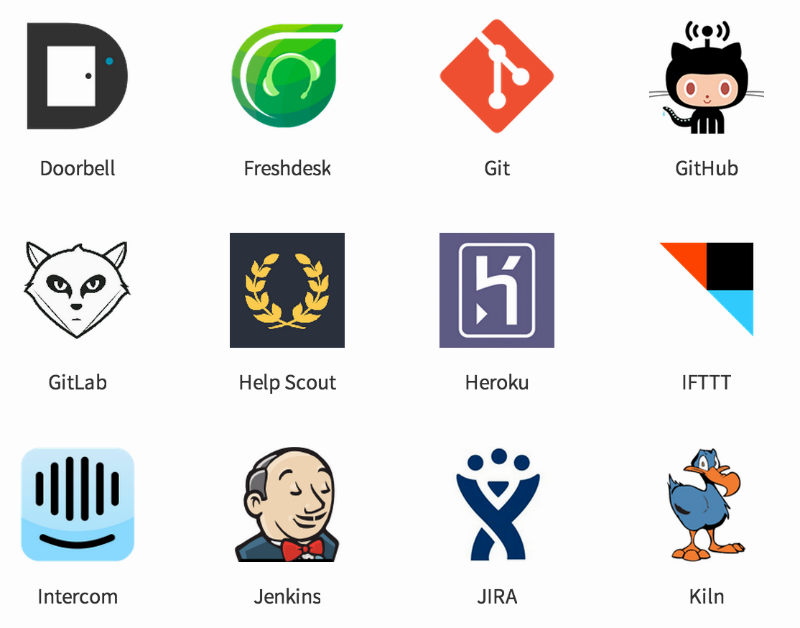All data on one screen: Experience integrating Kato messenger with IFTTT, Hubot and Stripe
Each company is constantly faced with a huge amount of incoming information that needs to be responded to: user tweets, new rules in the industry, technical support email messages, automatic alerts from servers, data on work problems from contractors, notifications from payment services, and so on.
It is desirable to combine all this information at one point, and this role has traditionally been assigned to e-mail, which is not always the best solution.

E-mail does not have the flexibility to make working with a variety of incoming signals convenient for a large company. Even in relatively small organizations with only a couple of dozen employees, filtering and the correct direction of email flows becomes a complex, ongoing and time-consuming activity. As a result, in the search for the necessary information, employees have to wade through large volumes of unnecessary emails, which entails information overload and reduces productivity.
There is no need to talk about the pleasure of working in a situation when the mailbox is chronically full (for the most part, with irrelevant messages). Attempts to solve the problem in the electronic mail systems themselves require serious training and increased attention from ordinary staff, which is not always possible or advisable.
Messengers come to the rescue, which allow you to direct information flows to the “right” dedicated channels, giving the employees themselves the opportunity to ignore the data that they do not need and set up to receive the necessary ones.
For example, in Katoyou can create special rooms that are designed for messages of a certain type - for mentions of your company on the Twitter service, for notifications of successful sales, for messages about failures of a server, and so on. Those employees of the company who need the information published in them can “subscribe” to these thematic rooms.
It is clear that in order to implement this scheme, the messenger must be able to integrate with external services, that is, it must have functionality that allows messages from external services to be displayed in the rooms and, symmetrically, send messages to external services as a result of certain actions in the messenger (for example, creating a message of a certain format in a certain room).
An example of a service, the integration with which instantly makes the messenger a lot more valuable working tool, is IFTTT (the name is pronounced “gift” without the initial sound “g” and is an abbreviation of the phrase “if this, then that”, that is, “if this, then then "- on" Habré "and GT repeatedly wrote about it ).
IFTTT users can create so-called “recipes” that define a given scenario - what “something” needs to be done when “this” event occurs. For example, you can create a recipe that will send an alert to your email address each time you add a new file to Google Drive NAS.
Kato messenger has a special IFTTT channel, which contains a number of useful recipes - for example, with their help, users can send notifications from Dropbox, Evernote, calendar, or alerts about the release of a new comic strip about the programmer Dilbert to the messenger . Any Kato user can use ready-made recipes or create their own (with the possibility of publishing them). The integration between Kato and IFTTT works in a two-way mode - you can send messages to Kato rooms in the event of an external event (for example, a tweet with a certain hashtag appeared), or vice versa, perform actions in connected services using messages in the messenger (for example, by writing a message to Kato, create an event on the calendar). An alternative to IFTTT is the Zapier service .

, which, unlike the free "ifta", is paid (and is quite expensive). Nevertheless, Kato has integrations implemented with its help - for example, with Asana and Base CRM.
Another useful integration for work is the messenger’s connection with the “open” Hubot notification automation service created by GitHub. Using it, you can, for example, send messages to the Kato room about the testers adding a description of a problem that has just been found in your program to JIRA, display information from Dropbox folders, or data on the current status of servers.
The following is an example of using a version of Hubot adapted in Kato (command to find and display a sunset picture in the room):

Hubot comes with a set of ready-made scripts to automate the most popular tasks (some examples: translation of documents, integration with Google Maps, publication of images), but users can create new scripts or separate commands, “sharpened” for their needs.
Kato messenger can work with dozens of services, and their number is constantly growing (the picture below shows a small subset of these services - between the letters “D” and “K”):

Currently, the undisputed leaders in popularity among Kato users are integrations with GitHub and Raygun .
Integration with GitHub allows you to receive notifications about the main events in the project (for example, about creating a new revision of the code or adding a new comment to an existing problem).
Connecting the Raygun service, which has built-in integration with Kato , allows you to send error messages to the Kato rooms on the site or in mobile applications.
One of the most difficult integrations to implement was working with the Stripe payment service - it took a lot of time and effort to combine the API of this project with Kato, but as a result, users can see Stripe notifications about the status of sales on their online directly in the Kato rooms stores.
As mentioned above, communication between company employees and the outside world often occurs via e-mail.
Each room in Kato has its own email address - it can be used to send the necessary messages directly to a specific room, and the whole team can discuss this message in the chat.
In addition, via email it is convenient to integrate with various notification services like syslog - when the next “alarm” is generated, a notification is sent to the desired room. In addition, some integrations with the messenger can be carried out exclusively through email (for example, BitBucket Issues).
Kato has a universal and simple interface that allows you to programmatically create messages in a given room - the HTTP POST API. With it, developers of any projects can write a simple “bundle” of their service with the Kato messenger, and send messages from their service directly to the Kato rooms.
For example, the service employees integrated their project with Kato to receive feedback from UserEcho clients using the HTTP POST API . As a result, Kato rooms receive messages about user actions in UserEcho.

Integrations allow you to turn the messenger into a convenient tool for quickly receiving comprehensive information about the state of affairs in an organization, project, or team. The user Kato, who received an error message on the server directly in the chat, will respond to it faster than if a similar notification would be sent only by email - this is implied by the nature of the messenger.
The number of services that have an API for communicating with other projects is constantly increasing. Accordingly, the functionality of messengers such as Kato will be constantly expanded by creating integrations with new popular tools. This means that employees of many companies will be able to work more productively and with greater pleasure.

Why do we need integrations in messengers
E-mail does not have the flexibility to make working with a variety of incoming signals convenient for a large company. Even in relatively small organizations with only a couple of dozen employees, filtering and the correct direction of email flows becomes a complex, ongoing and time-consuming activity. As a result, in the search for the necessary information, employees have to wade through large volumes of unnecessary emails, which entails information overload and reduces productivity.
There is no need to talk about the pleasure of working in a situation when the mailbox is chronically full (for the most part, with irrelevant messages). Attempts to solve the problem in the electronic mail systems themselves require serious training and increased attention from ordinary staff, which is not always possible or advisable.
Messengers come to the rescue, which allow you to direct information flows to the “right” dedicated channels, giving the employees themselves the opportunity to ignore the data that they do not need and set up to receive the necessary ones.
For example, in Katoyou can create special rooms that are designed for messages of a certain type - for mentions of your company on the Twitter service, for notifications of successful sales, for messages about failures of a server, and so on. Those employees of the company who need the information published in them can “subscribe” to these thematic rooms.
It is clear that in order to implement this scheme, the messenger must be able to integrate with external services, that is, it must have functionality that allows messages from external services to be displayed in the rooms and, symmetrically, send messages to external services as a result of certain actions in the messenger (for example, creating a message of a certain format in a certain room).
IFTTT Integration
An example of a service, the integration with which instantly makes the messenger a lot more valuable working tool, is IFTTT (the name is pronounced “gift” without the initial sound “g” and is an abbreviation of the phrase “if this, then that”, that is, “if this, then then "- on" Habré "and GT repeatedly wrote about it ).
IFTTT users can create so-called “recipes” that define a given scenario - what “something” needs to be done when “this” event occurs. For example, you can create a recipe that will send an alert to your email address each time you add a new file to Google Drive NAS.
Kato messenger has a special IFTTT channel, which contains a number of useful recipes - for example, with their help, users can send notifications from Dropbox, Evernote, calendar, or alerts about the release of a new comic strip about the programmer Dilbert to the messenger . Any Kato user can use ready-made recipes or create their own (with the possibility of publishing them). The integration between Kato and IFTTT works in a two-way mode - you can send messages to Kato rooms in the event of an external event (for example, a tweet with a certain hashtag appeared), or vice versa, perform actions in connected services using messages in the messenger (for example, by writing a message to Kato, create an event on the calendar). An alternative to IFTTT is the Zapier service .

, which, unlike the free "ifta", is paid (and is quite expensive). Nevertheless, Kato has integrations implemented with its help - for example, with Asana and Base CRM.
Automate alerts via Hubot
Another useful integration for work is the messenger’s connection with the “open” Hubot notification automation service created by GitHub. Using it, you can, for example, send messages to the Kato room about the testers adding a description of a problem that has just been found in your program to JIRA, display information from Dropbox folders, or data on the current status of servers.
The following is an example of using a version of Hubot adapted in Kato (command to find and display a sunset picture in the room):

Hubot comes with a set of ready-made scripts to automate the most popular tasks (some examples: translation of documents, integration with Google Maps, publication of images), but users can create new scripts or separate commands, “sharpened” for their needs.
GitHub, Raygun and Stripe
Kato messenger can work with dozens of services, and their number is constantly growing (the picture below shows a small subset of these services - between the letters “D” and “K”):

Currently, the undisputed leaders in popularity among Kato users are integrations with GitHub and Raygun .
Integration with GitHub allows you to receive notifications about the main events in the project (for example, about creating a new revision of the code or adding a new comment to an existing problem).
Connecting the Raygun service, which has built-in integration with Kato , allows you to send error messages to the Kato rooms on the site or in mobile applications.
One of the most difficult integrations to implement was working with the Stripe payment service - it took a lot of time and effort to combine the API of this project with Kato, but as a result, users can see Stripe notifications about the status of sales on their online directly in the Kato rooms stores.
Email Integration
As mentioned above, communication between company employees and the outside world often occurs via e-mail.
Each room in Kato has its own email address - it can be used to send the necessary messages directly to a specific room, and the whole team can discuss this message in the chat.
In addition, via email it is convenient to integrate with various notification services like syslog - when the next “alarm” is generated, a notification is sent to the desired room. In addition, some integrations with the messenger can be carried out exclusively through email (for example, BitBucket Issues).
How to integrate your project with Kato
Kato has a universal and simple interface that allows you to programmatically create messages in a given room - the HTTP POST API. With it, developers of any projects can write a simple “bundle” of their service with the Kato messenger, and send messages from their service directly to the Kato rooms.
For example, the service employees integrated their project with Kato to receive feedback from UserEcho clients using the HTTP POST API . As a result, Kato rooms receive messages about user actions in UserEcho.

All the information you need - on one screen
Integrations allow you to turn the messenger into a convenient tool for quickly receiving comprehensive information about the state of affairs in an organization, project, or team. The user Kato, who received an error message on the server directly in the chat, will respond to it faster than if a similar notification would be sent only by email - this is implied by the nature of the messenger.
The number of services that have an API for communicating with other projects is constantly increasing. Accordingly, the functionality of messengers such as Kato will be constantly expanded by creating integrations with new popular tools. This means that employees of many companies will be able to work more productively and with greater pleasure.
